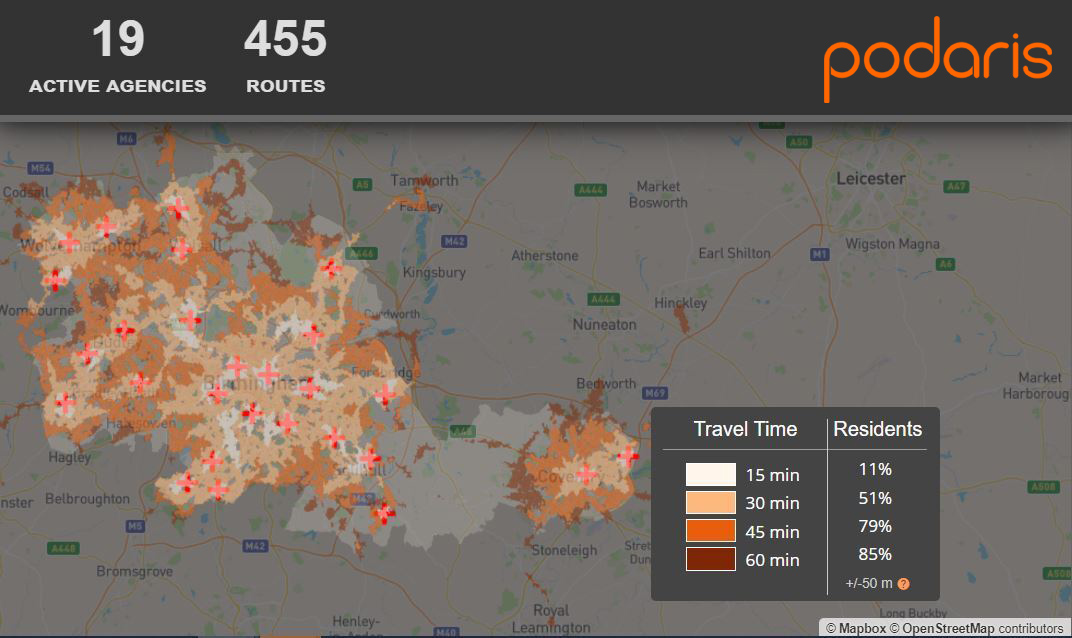National Express currently runs 1,600 buses in Birmingham and the West Midlands, carrying 600,000 passengers a day. Yesterday, more than 3,000 National Express bus drivers in the region began an indefinite strike over pay, leading to around 93% of the network being affected.
While the advice is currently not to travel using local services unless absolutely necessary, a spokesperson for National Express West Midlands has said that “limited service, primarily serving the region’s major hospitals” is operating.
We took a look at what the reduced service meant for access to hospitals for those living in the region using Podaris’ isochrone and dataset analysis tools.
At the top of our first screenshot we can see a comprehensive breakdown of all agencies, routes, peak vehicle and revenue time/distance stats before strike action. And below, travel-time isochrones that show us what percentage of residents can travel to hospitals (marked on our map with red crosses) in 15 minute steps, up to an hour away.

By comparison, and with 218 fewer routes in operation, we can see that the percentage of residents able to travel to hospitals within an hour falls from 85% to 64%.

If you'd like to take a deeper diver into how we performed this kind of isochrone analysis, head over to our isochrone solutions page or take a look at a worked example on Youtube here.
Here's hoping for a speedy and satisfactory resolution for passengers and drivers in Birmingham and the West Midlands.